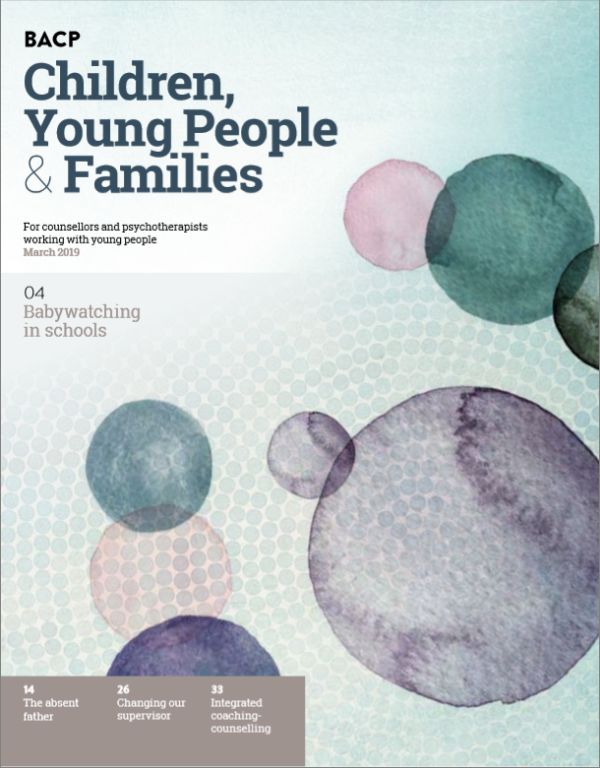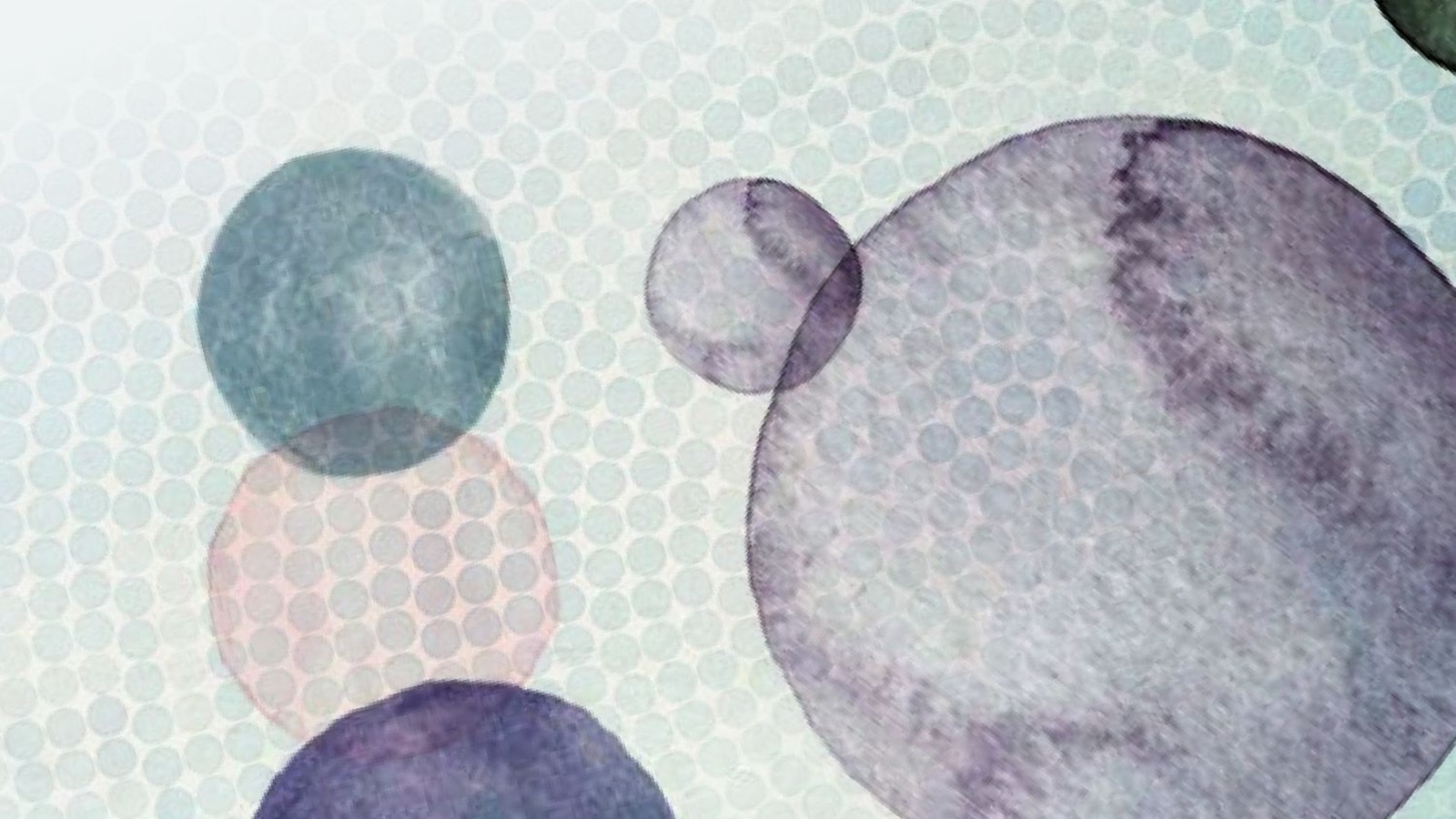In this issue
Features
BASE® Babywatching in school
Michele Crooks and colleagues describe an intervention to encourage empathy
Fiction as therapy…
…is a powerful and underused tool, according to Elaine Bousfield
The place of wisdom
Nick Luxmoore believes that sharing wisdom at the right time and in the right way is helpful to young people
In practice
The ripple effects of trauma
Emily Brearley reports on last November’s BACP day conference
Changing our supervisor
Linda Bean and Kevin Perkins discuss if and when and how
Groupwork
Friendly Groups, started by Anita Hughes 20 years ago, provide a safe therapeutic space for work with anxious and autistic children
Integrated counselling and coaching (free article)
Alan Flynn and Nicola Sharp researched the benefits of a dual approach with young people
Issues
The digital umbilicus
Sarah Haywood continues her mini series around digital childhood
The ACE hydra
Rachel Eastop on adverse childhood experiences
The absent father…
…is a complex and confusing topic, with many possible father-shaped holes, says Katia Houghton Contents
Regulars
Reflecting on… toilets
Jeanine Connor
Thinking about… shame and self-righteousness
Lynn Martin
Considering… formal assessments
Nick Luxmoore
Resources
Our mini focus on two BACP Good Practice in Action resources
Word for word
A practitioner’s personal response to a given quote. This time, Elaine Bennett

Members and subscribers can download the pdf from The BACP Children, Families and Young People archive
Welcome from the editor
What goes round comes round’ is an overused epithet, but one that is often pertinent. Over my 12 years of this journal’s editorial and contents page, it’s obvious that this has applied to my attitudes too. I’ve regularly published items showing how important it is to ‘offer the same therapeutic help to all children, including the physically ill and those with learning disabilities’ (December 2006); ‘work with different models towards a common end’ (March 2007); ‘adapt and adjust to each person’s particular mental health needs’ (June 2007); and ‘investigate and integrate what is good and appropriate to our clients’ (September 2007).
In the following issue (December 2007, newly ‘in colour’), after recounting The case of the 18th camel – I also made the more nebulous point that (a) we sometimes have to put an intuitive (rather than an evidence-based) cog into the works and simply watch the magic happen, and (b) we bring ourselves into relationship with the client in such a way that something unique happens and we separate again, work done. It’s still my unswerving mantra. Medicalised I refuse to be as a therapist.
And I’ve supported my views (alongside those of others) by commissioning tons of articles written by super-wonderful and knowledgeable practitioners who’ve made this journal what it is today. I’m grateful to you all.
However, after a while, my thinking ‘going round and round’ can risk becoming stale. I gave up my private practice for household reasons a couple of years ago (some of you know about our six years with dirty tap water). Since then, I’ve still felt as passionate as ever about CYP, but now recognise an increasing sense of stress about managing the content at one remove. So it’s time to stand aside and allow another editor to bring you what you want and look for. Of course, some topics may not change a whole lot in future – trauma, anxiety, symptoms that tend to get a ‘label’, play, storytelling, family considerations, relationship, groupwork and (latterly) the digital lives of our CYP etc, will run and run. But everything will be reinvigorated under our new editor, Jeanine Connor. And that will delight me. Especially when I’m off pursuing my path as a lady who illustrates!
But – to be serious – we need to note urgently that what has ‘gone round’, in terms of the (often awful) adverse early experiences of our children, will frequently ‘come round’ in the lives they then lead as teens: with gangs, violence, poverty, crime, disengagement, lack of empathy, and worse, figuring heavily. So our lead article on BASE Babywatching® describes a groupwork intervention among latency-age children, designed to model quality attunement and attachment, as they spend a year observing a parent and baby once a week, in a safe atmosphere of curiosity and discovery.
The proven reduction in anxiety and aggression issues in the children, and the increase of sensitivity and empathy in their thinking and behaviour, are like a breakwater between the ACEs that some of those watching have and the possibility-filled lives they can more probably lead when that ‘something unique’ happens to change their trajectory.
A chance to straighten out child development? Isn’t that what we all want for our damaged and struggling clients? To stop what’s gone round coming back with a vengeance to ‘get them’? I hope some of us will take the opportunity to train to lead such groups.
The positive side of ‘what goes round comes round’ is demonstrated not only in teachers who relate well to students and are remembered and retain their influence long afterwards, or in parents who nurture their children well enough to see them bring up their own children to be loving, caring and compassionate. It’s also seen in the regard with which we therapists hold our young clients and untiringly work with them to bring about an improved future for them – they remember the quality of how we were with them, long into their future, and it touches them lightly on the fringes of their mind when challenges arise. I know because they’ve told me.
And so, I leave the world of CYP therapy safely in your hands, knowing you will care for it well as it goes round and comes round over the years. I know, too, that you will welcome and support Jeanine in her new role.
Eleanor Patrick
Editor
